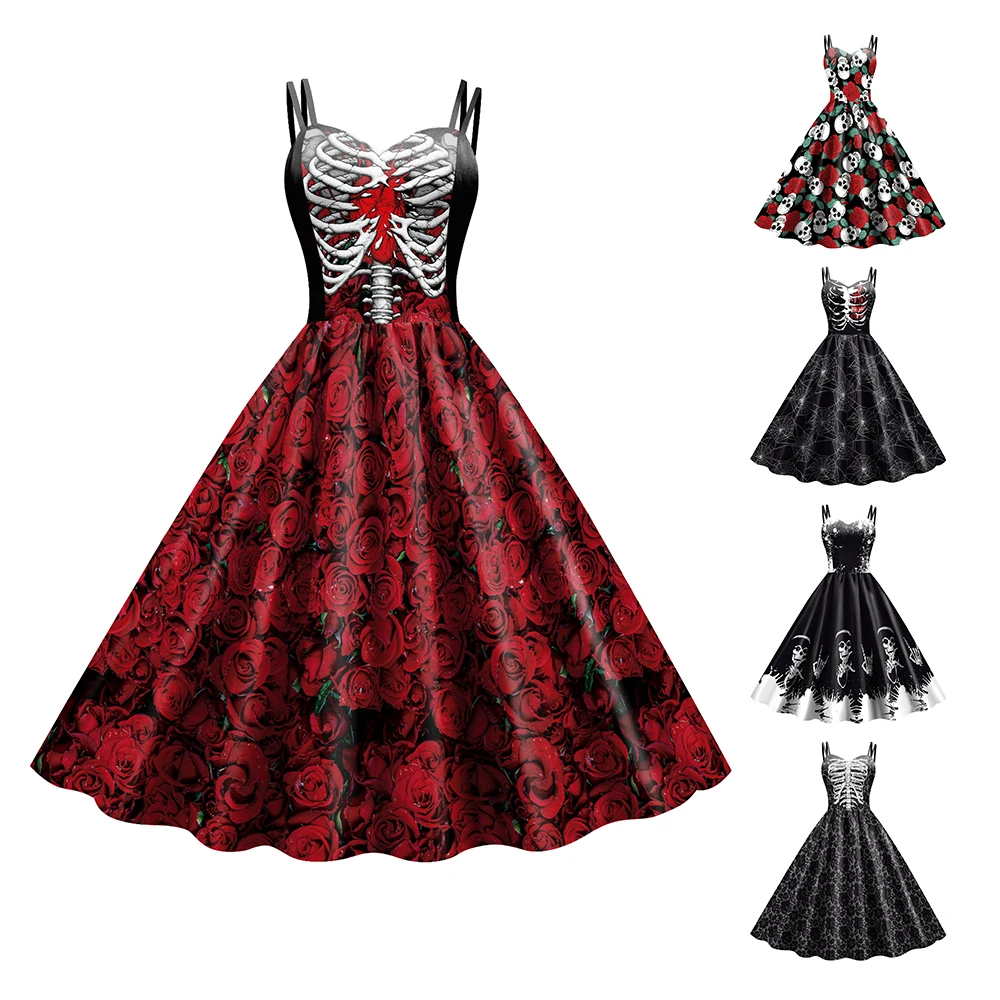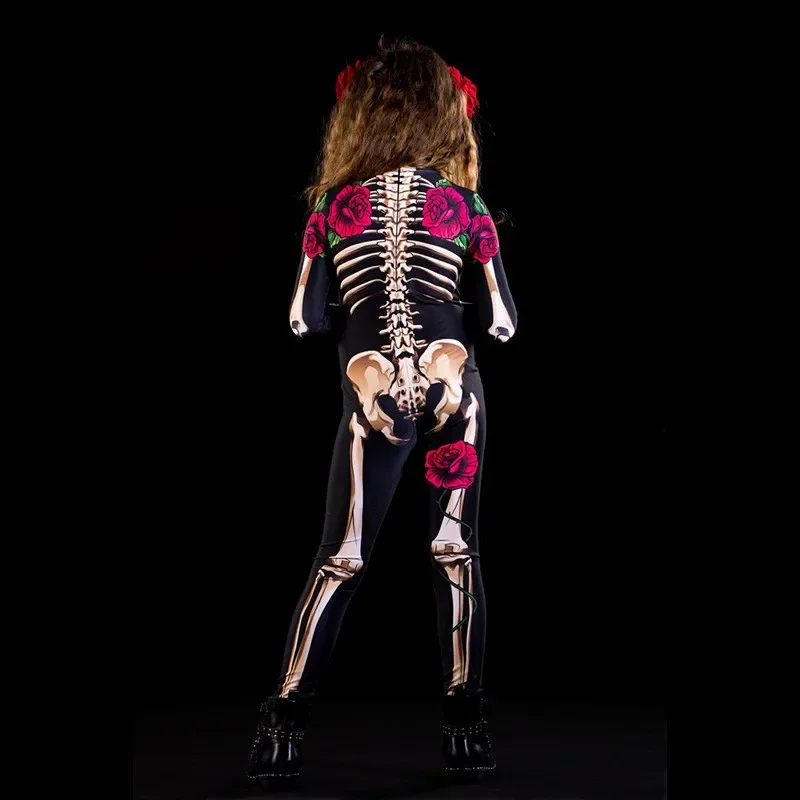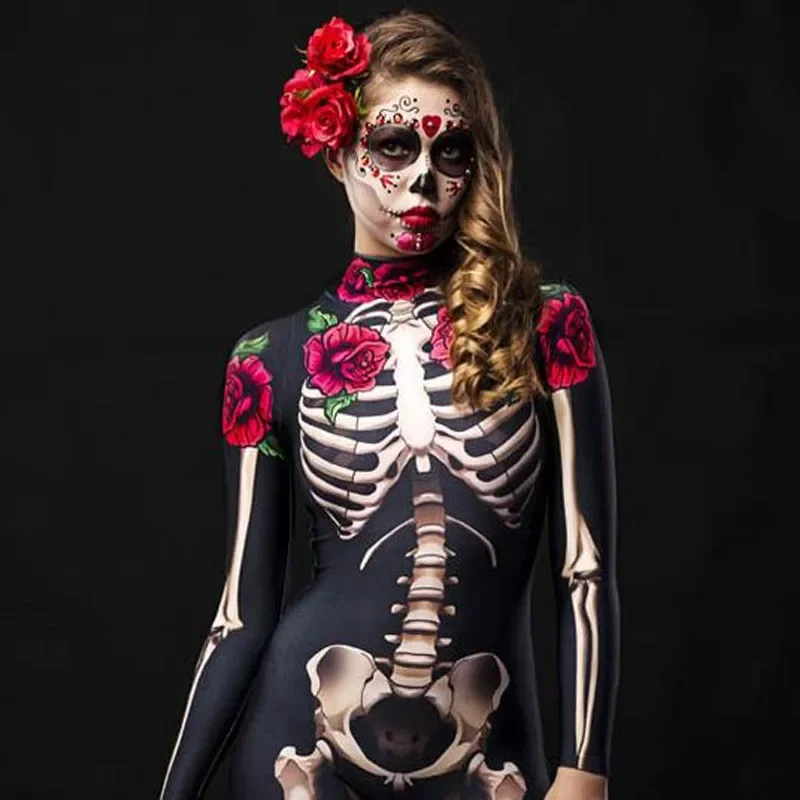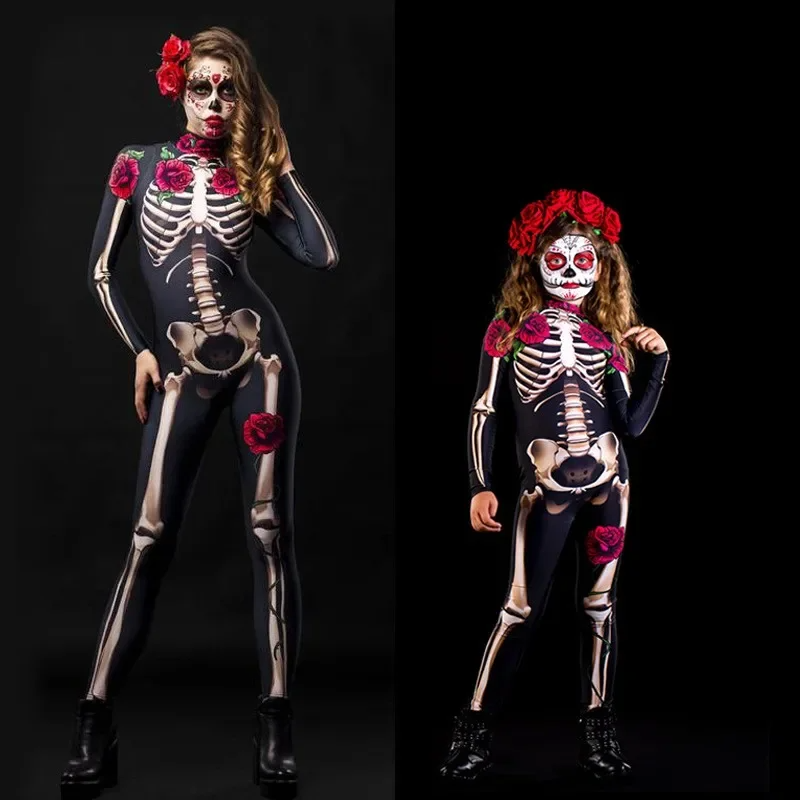Dia de los Muertos, or Day of the Dead, is a vibrant Mexican holiday that honors deceased loved ones through joyful celebrations and intricate traditions. One of the most distinctive elements of Dia de los Muertos is the elaborate and colorful costumes worn during the festivities. This comprehensive guide explores the history, key features, cultural significance, and practical considerations of Dia de los Muertos Costumes, offering insights into their unique appeal.
The History of Dia de los Muertos Costumes
Origins of the Celebration
Dia de los Muertos traces its roots back to ancient Mesoamerican traditions, particularly those of the Aztecs, who held rituals celebrating the lives of ancestors. These rituals were intended to honor the deceased and assist them on their journey to the afterlife. When Spanish conquistadors arrived in the 16th century, they brought with them Catholic influences, blending indigenous practices with Spanish culture. The result was Dia de los Muertos, a syncretic celebration that combines elements of both pre-Columbian and Christian traditions.
The holiday is celebrated on November 1st and 2nd, coinciding with the Catholic observances of All Saints’ Day and All Souls’ Day. Dia de los Muertos is characterized by vibrant altars (ofrendas), marigolds, sugar skulls, and elaborate costumes. These elements serve to honor the dead, celebrate their memories, and affirm the continuity between the living and the deceased.
Costumes have always played a significant role in Dia de los Muertos, evolving over time to incorporate various cultural and artistic influences. The costumes are rich in symbolism and serve as an important means of expressing respect for the deceased while celebrating life and death in a colorful and joyous manner.
Evolution of Dia de los Muertos Costumes
The evolution of Dia de los Muertos dress up reflects changes in societal norms, artistic trends, and cultural exchanges. Early costumes were simple, often featuring traditional Mexican attire and masks inspired by indigenous deities. Over time, these costumes became more elaborate, incorporating elements of European fashion, folk art, and contemporary influences.
The iconic skeletal imagery associated with Dia de los Muertos dress up is partly inspired by José Guadalupe Posada’s “La Calavera Catrina,” a satirical etching from the early 20th century. La Catrina depicts a elegantly dressed female skeleton, critiquing the vanity and superficiality of the elite. Today, La Catrina has become a central figure in Dia de los Muertos celebrations, often serving as inspiration for costumes and makeup.
Modern Dia de los Muertos costumes blend traditional elements with contemporary styles, resulting in diverse and imaginative interpretations. The use of colorful fabrics, intricate embroidery, and ornate accessories reflects the creativity and cultural pride of those who participate in the festivities. Body paint and makeup play a crucial role in transforming individuals into living works of art, with detailed sugar skull (calavera) designs being particularly popular.
As Dia de los Muertos has gained international recognition, the costumes have also influenced global fashion and popular culture. Nonetheless, it is essential to approach the celebration and its costumes with respect and understanding, honoring the cultural significance and traditions of the holiday.
Key Features of Dia de los Muertos Costumes
Traditional Elements
Dia de los Muertos costumes are characterized by several traditional elements that hold deep cultural and symbolic significance. These elements are often combined to create unique and personalized attire that honors the spirit of the holiday.
- Skeleton Imagery: Skeletons and skulls are central motifs in Dia de los Muertos costumes. They symbolize the cycle of life and death and serve as reminders of the impermanence of life. Costumes often feature skeletal designs, either through body paint, makeup, or clothing adorned with bone patterns. The skeletal imagery is a playful yet profound way to acknowledge mortality while celebrating the memory of the deceased.
- Colorful Attire: Bright and vibrant colors are essential to Dia de los Muertos costumes. Colors such as marigold orange, deep red, and bright blue are commonly used to represent life, energy, and the vibrancy of the afterlife. Traditional Mexican garments, such as embroidered blouses, skirts (faldas), and ponchos, are often incorporated into the costumes, adding cultural authenticity and richness to the ensemble. The vivid colors and intricate designs reflect the lively and joyful nature of the celebration.
- Marigolds (Cempasúchil): Marigolds, known as cempasúchil in Spanish, are the traditional flowers of Dia de los Muertos. They are believed to guide the spirits of the deceased to the altars with their vibrant color and strong scent. Costumes often feature marigold accessories, such as flower crowns, necklaces, and hair adornments. The inclusion of marigolds in the costumes adds a meaningful and aromatic touch, connecting the wearer to the spiritual aspects of the holiday.
- Sugar Skull (Calavera) Makeup: Sugar skull makeup is a distinctive and artistic element of Dia de los Muertos costumes. The intricate designs mimic the elaborately decorated sugar skulls that are part of the holiday’s offerings. The makeup typically includes intricate patterns, bright colors, and elements such as flowers, hearts, and crosses. Sugar skull makeup allows for personal expression and creativity while honoring the traditional motifs of the celebration.
Modern Interpretations
Modern Dia de los Muertos costumes often blend traditional elements with contemporary fashion and artistic interpretations. These adaptations allow for greater creativity and personalization while maintaining the cultural significance of the holiday.
- Fashion-Forward Designs: Fashion designers and artists have embraced Dia de los Muertos motifs, creating couture pieces and avant-garde costumes that push the boundaries of traditional attire. These fashion-forward designs often incorporate high-quality fabrics, detailed embellishments, and unique silhouettes. While they may depart from traditional dress, they honor the spirit of the holiday through innovation and artistic expression.
- Pop Culture Influences: Dia de los Muertos costumes have increasingly incorporated pop culture references, blending the holiday’s themes with modern characters and trends. For example, costumes may feature sugar skull makeup inspired by popular fictional characters or combine traditional elements with contemporary fashion styles. These pop culture influences make the celebration accessible to a wider audience, allowing for new and creative interpretations while maintaining cultural respect.
- Sustainable and Ethical Fashion: With growing awareness of environmental and ethical issues, many Dia de los Muertos costumes now emphasize sustainability and ethical craftsmanship. Artisans and designers create costumes using eco-friendly materials, repurposed fabrics, and fair-trade practices. These sustainable costumes honor the cultural traditions of Dia de los Muertos while promoting responsible and conscientious consumption.
- Inclusive and Gender-Neutral Costumes: Modern interpretations of Dia de los Muertos costumes often prioritize inclusivity and gender-neutrality. Costumes are designed to be accessible and meaningful for people of all genders and backgrounds. The inclusive approach ensures that everyone can participate in the celebration and express their unique connection to the holiday. The gender-neutral designs foster a sense of unity and inclusivity, reflecting the communal and respectful nature of Dia de los Muertos.
DIY and Customization
Creating a Dia de los Muertos costume offers an opportunity for personal expression and creativity. Many individuals choose to make their costumes, allowing for unique and customized designs that reflect their personal connection to the holiday.
- DIY Body Paint and Makeup: One of the most popular DIY elements of Dia de los Muertos costumes is the creation of sugar skull makeup. Using face paints and cosmetics, individuals can design their unique calavera looks, incorporating personal symbols and motifs. Tutorials and guides are widely available, offering step-by-step instructions for creating intricate and detailed designs. The DIY approach allows for personalized and meaningful expressions of the holiday’s themes.
- Crafting Accessories: Accessories are essential to completing a Dia de los Muertos costume, and many can be crafted at home. Flower crowns, jewelry, and marigold adornments can be made using materials such as artificial flowers, beads, and ribbons. Crafting accessories allows for creativity and personalization, ensuring that each costume is unique and reflective of the wearer’s style and connection to the holiday. The handmade accessories add a personal and artistic touch to the overall ensemble.
- Repurposing Clothing: Creating a Dia de los Muertos costume often involves repurposing existing clothing. Traditional Mexican garments, vintage pieces, and everyday clothes can be transformed into festive attire with the addition of embellishments, embroidery, and other decorative elements. Repurposing clothing promotes sustainability and allows for unique and innovative costume designs. The use of repurposed clothing ensures that the costumes are both creative and environmentally conscious.
- Collaborative Projects: Crafting Dia de los Muertos costumes can be a collaborative and communal activity, involving family and friends in the creative process. Group projects foster a sense of unity and shared purpose, enhancing the overall experience of the celebration. Collaborative crafting sessions allow for the exchange of ideas and techniques, resulting in unique and diverse costume designs. The communal approach reflects the collective and respectful nature of Dia de los Muertos.
Cultural Significance of Dia de los Muertos Costumes
Honoring the Deceased
Dia de los Muertos costumes play a crucial role in the holiday’s purpose of honoring the deceased and celebrating their memory.
- Remembrance and Respect: Costumes serve as a means of expressing remembrance and respect for deceased loved ones. The intricate designs and symbols incorporated into the costumes often hold personal significance, representing the wearer’s connection to the departed. The act of wearing the costume is a form of tribute, acknowledging the presence and influence of the deceased in the lives of the living. The costumes reflect the deep respect and reverence for ancestors and loved ones who have passed away.
- Connection to Tradition: By wearing traditional Dia de los Muertos costumes, individuals connect with centuries-old customs and practices. The attire serves as a tangible link to cultural heritage, fostering a sense of continuity and belonging. Participating in the traditional aspects of the celebration ensures that the cultural significance of Dia de los Muertos is preserved and honored. The costumes embody the rich history and cultural identity of the holiday.
- Celebration of Life and Death: The colorful and joyful nature of Dia de los Muertos costumes highlights the celebration of both life and death. The festival is not a somber occasion but rather a vibrant and uplifting event that honors the cycle of life. The costumes embody this duality, celebrating the memories of the deceased while affirming the continuity of life. The celebratory nature of the costumes reflects the positive and life-affirming ethos of Dia de los Muertos.
Cultural Expression and Identity
Dia de los Muertos costumes are a powerful form of cultural expression, reflecting the rich and diverse traditions of Mexican culture.
- Cultural Pride: Wearing Dia de los Muertos costumes is an expression of cultural pride and identity. The traditional attire, symbols, and colors showcase the beauty and depth of Mexican heritage. The act of dressing in these costumes allows individuals to celebrate their cultural roots and share them with others. The cultural pride manifested in the costumes enhances the overall significance and enjoyment of the celebration.
- Artistic Creativity: The creation and adornment of Dia de los Muertos costumes provide an opportunity for artistic creativity. Participants can experiment with colors, patterns, and designs, resulting in unique and personalized expressions of the holiday. The artistic aspect of the costumes encourages innovation and self-expression. The creativity involved in crafting the costumes adds an artistic and imaginative dimension to the celebration.
- Celebration of Diversity: Dia de los Muertos costumes celebrate the diversity of Mexican culture, incorporating elements from various regions and traditions. The costumes reflect the rich tapestry of influences that shape the holiday, from indigenous practices to Spanish and contemporary elements. The celebration of diversity ensures that the costumes represent a wide range of cultural expressions and traditions. The diverse influences enrich the cultural and artistic significance of the costumes.
- Global Influence: As Dia de los Muertos gains international recognition, the costumes have also influenced global fashion and popular culture. Festivals and events celebrating the holiday are held worldwide, and the costumes have become symbols of cultural appreciation and respect. The global influence of Dia de los Muertos costumes ensures that the holiday’s themes and traditions are shared and celebrated across cultures. The international appeal of the costumes highlights the universal significance of honoring and remembering the deceased.
Practical Considerations for Dia de los Muertos Costumes
Approaching with Respect
It is essential to approach Dia de los Muertos costumes with respect and cultural sensitivity, particularly for those outside the Mexican culture.
- Understanding the Significance: Before creating or wearing a Dia de los Muertos costume, take the time to understand the cultural and spiritual significance of the holiday. Educate yourself about the traditions, symbols, and practices that underpin the celebration. Understanding the significance ensures that the costumes are worn with respect and appreciation. The informed approach fosters cultural respect and prevents misappropriation.
- Avoiding Stereotypes: Be mindful to avoid stereotypes or caricatures that misrepresent or trivialize the cultural significance of Dia de los Muertos. The costumes should honor the traditions and values of the holiday, free from oversimplified or offensive portrayals. Sensitivity to cultural nuances ensures that the costumes are respectful and authentic. The avoidance of stereotypes promotes cultural appreciation and dignity.
- Supporting Authentic Artisans: Whenever possible, support artisans and businesses that create authentic Dia de los Muertos costumes and accessories. Purchasing from reputable sources ensures that the costumes are crafted with cultural integrity and that the artisans receive fair compensation for their work. Supporting authentic artisans promotes ethical and responsible consumption. The endorsement of authentic craftsmanship ensures that the cultural heritage of Dia de los Muertos is going to preserve and respect.
- Participating in Cultural Events: Engage with local cultural events and communities that celebrate Dia de los Muertos. Participating in these events provides a deeper understanding and appreciation of the holiday’s traditions and significance. The involvement in cultural events ensures that the celebration is going to experience in its authentic and communal context. The active participation fosters respect and appreciation for the cultural heritage of Dia de los Muertos.
DIY Costume Creation
Creating a Dia de los Muertos costume at home can be a rewarding and meaningful experience.
- Planning and Inspiration: Begin by researching traditional Dia de los Muertos costumes and drawing inspiration from various sources. Consider incorporating personal elements and symbols that hold significance to you or your deceased loved ones. The planning phase ensures that the costume is thoughtful and meaningful. The inspiration guides the creative process, resulting in a unique and personalized costume.
- Gathering Materials: Collect the necessary materials for your costume, including fabrics, paints, accessories, and any other decorative elements. Look for sustainable and eco-friendly options whenever possible. The careful selection of materials ensures that the costume is both creative and environmentally conscious. The quality of the materials enhances the overall appearance and durability of the costume.
- Assembling the Costume: Follow step-by-step guides or tutorials to assemble your costume, paying attention to details and craftsmanship. Experiment with different techniques and designs to achieve the desired look. The assembly process allows for creativity and innovation. The attention to detail ensures that the costume is going to well-craft and visually appealing.
- Final Touches and Accessories: Add final touches such as jewelry, flower crowns, and any other accessories that complement the costume. Ensure that everything is securely going to attach and comfortable to wear. The final touches enhance the overall appearance and authenticity of the costume. The thoughtful addition of accessories completes the ensemble and adds a personal and artistic flair.
Storing and Preserving Costumes
Proper storage and preservation of Dia de los Muertos costumes ensure that they remain in good condition for future use.
- Cleaning and Maintenance: After wearing your costume, clean it according to the care instructions for the materials used. Remove any makeup or body paint stains carefully to avoid damaging the fabric. The proper cleaning and maintenance ensure that the costume remains in good condition. The attention to care extends the lifespan and usability of the costume.
- Safe Storage: Store your costume in a cool, dry place, away from direct sunlight and moisture. Use garment bags or storage boxes to protect the costume from dust and pests. The safe storage conditions ensure that the costume is going to preserve and protected. The secure storage prevents damage and deterioration of the costume.
- Repairing and Restoring: If any part of the costume becomes damaged, repair it promptly to prevent further deterioration. Use appropriate materials and techniques to restore the costume to its original condition. The regular repair and restoration ensure that the costume remains wearable and visually appealing. The proactive maintenance preserves the quality and integrity of the costume.
- Documenting Your Costume: Consider documenting your costume with photos and notes, particularly if it holds personal significance. This documentation can serve as a reference for future costume creation or as a way to remember and celebrate your connection to the holiday. The documentation adds a personal and historical dimension to the costume. The recorded memories enhance the overall significance and enjoyment of the costume.
Conclusion
Celebrating Dia de los Muertos with Respect and Creativity
Dia de los Muertos dress up are a beautiful and meaningful expression of cultural heritage, honoring the deceased and celebrating the cycle of life and death. By approaching the creation and wearing of these costumes with respect, creativity, and cultural understanding, individuals can participate in the holiday’s rich traditions in a meaningful and joyous way.
- Respecting Cultural Significance: It is essential to honor the cultural and spiritual significance of Dia de los Muertos dress up. By understanding and respecting the traditions, symbols, and values that underpin the holiday, participants can celebrate with authenticity and integrity. The respectful approach ensures that the costumes and the overall celebration are meaningful and dignified.
- Embracing Creativity and Personal Expression: Dia de los Muertos dress up provide an opportunity for artistic creativity and personal expression. By blending traditional elements with modern interpretations, individuals can create unique and personalized costumes that reflect their connection to the holiday. The creative aspect enhances the enjoyment and significance of the celebration. The thoughtful and innovative designs ensure that the costumes are a true reflection of individuality and cultural pride.
-
Fostering Inclusivity and Unity: The inclusive and diverse nature of Dia de los Muertos dress up ensures that everyone can participate in the celebration. By embracing gender-neutral designs and diverse influences, the costumes promote a sense of unity and shared purpose. The inclusive approach reflects the communal and respectful nature of Dia de los Muertos. The inclusive and diverse participation enhances the overall experience and significance of the celebration.





